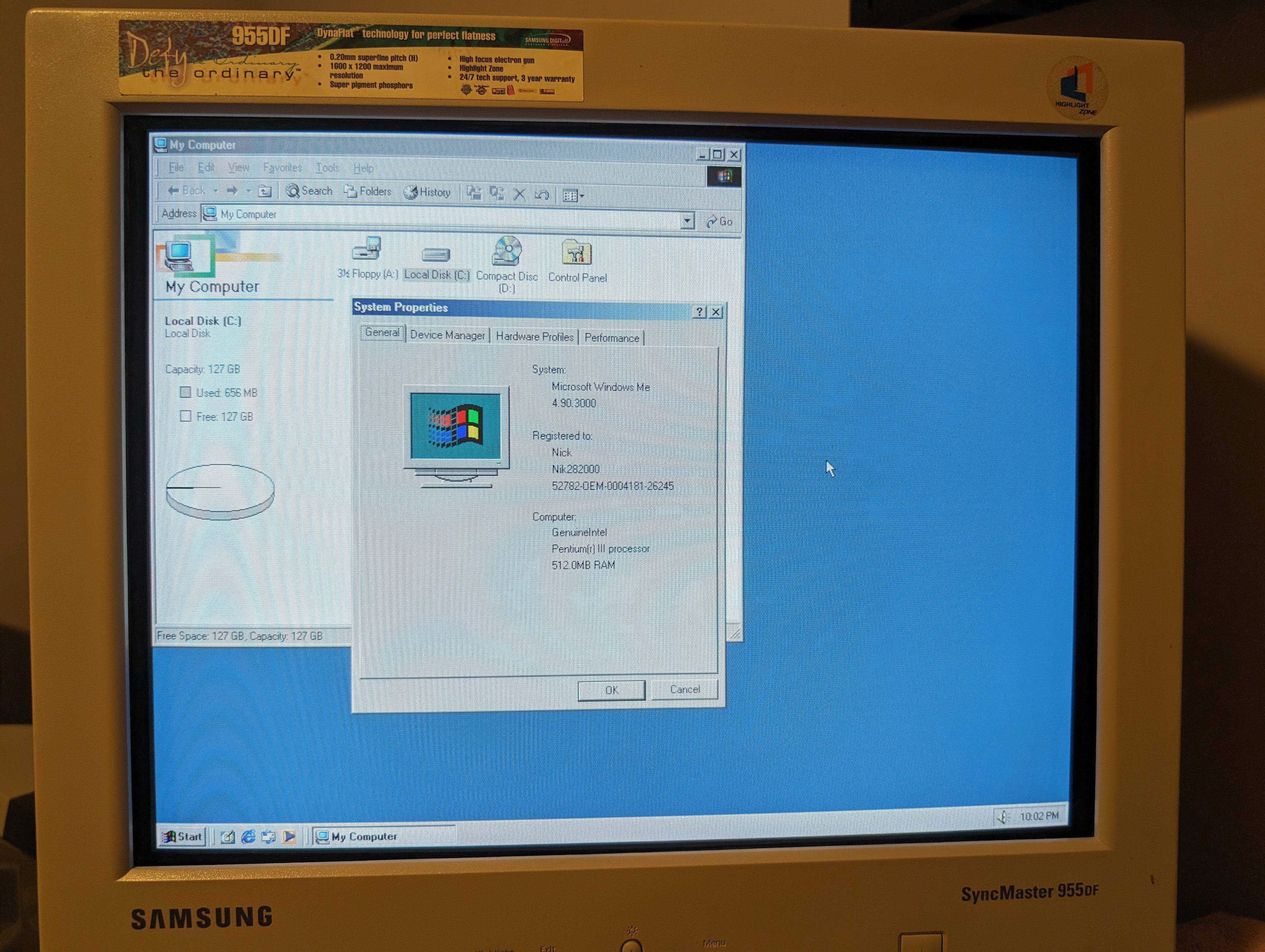this post was submitted on 15 Jun 2024
304 points (97.2% liked)
RetroGaming
19908 readers
473 users here now
Vintage gaming community.
Rules:
- Be kind.
- No spam or soliciting for money.
- No racism or other bigotry allowed.
- Obviously nothing illegal.
If you see these please report them.
founded 2 years ago
MODERATORS
you are viewing a single comment's thread
view the rest of the comments
view the rest of the comments

Rollercoaster Tycoon 1 and 2; Need for Speed 2 and 3; SimCity 3k.
Also, check your monitor properties. Afaik most CRT monitors (not TVs; those run at 60hz/50hz depending on region) are meant to run at 75~85hz. If it's running at 60hz when it's meant to run at a higher refresh rate, then that might be why it's nauseating (my crt has a very noticeable flicker at 60hz, but that goes away at 75hz).
Edit: to expand on this for any late-comers: CRTs work by using an electron gun (aka particle accelerator aka a motherfucking PARTICLE CANNON) to fire an electron beam at red, green and blue phosphors. When the electron hits a phosphor, it emits light based on the color hit. This beam sweeps over the phosphors at a speed dictated by the display's refresh rate and illuminates the phosphors one-by-one until it has illuminated the entire screen. This is why trying to take a picture or video of a CRT requires you to sync your shutter speed with the CRT. If your shutter isn't synced then the monitor will appear to be strobing or flickering (because it is, just very, very quickly)
These phosphors have a set glow duration, which varies based on the intended display refresh rate. A refresh rate that is too low will cause the phosphors to dim before the electron beam passes over them, while a refresh rate that's too high can cause ghosting, smearing, etc because the phosphors haven't had a chance to "cool off". TVs are designed to run at 60hz/50hz, depending on the region, and so their phosphors have a longer glow duration to eliminate flickering at their designated refresh rate. Computer monitors, on the other hand, were high-quality tubes and were typically geared for +75hz. The result is that if you run them at 60hz then you'll get flickering because the phosphors have a shorter glow duration than a TV.
Note: this is a place where LCD/LED panels solidly beat CRTs, because they can refresh the image without de-illuminating the panel, avoiding flicker at low refresh rates.
Edit 2: oh! Also, use game consoles with CRT TVs, not computer monitors. This is because old consoles, especially pre-3d consoles, "cheated" on sprites and took advantage of standard CRT TV resolution to blend pixels. The result is that you may actually lose detail if you play them on a CRT computer monitor or modern display. That's why a lot of older sprite-based games unironically look better if you use a real CRT TV or a decent CRT emulator video filter.